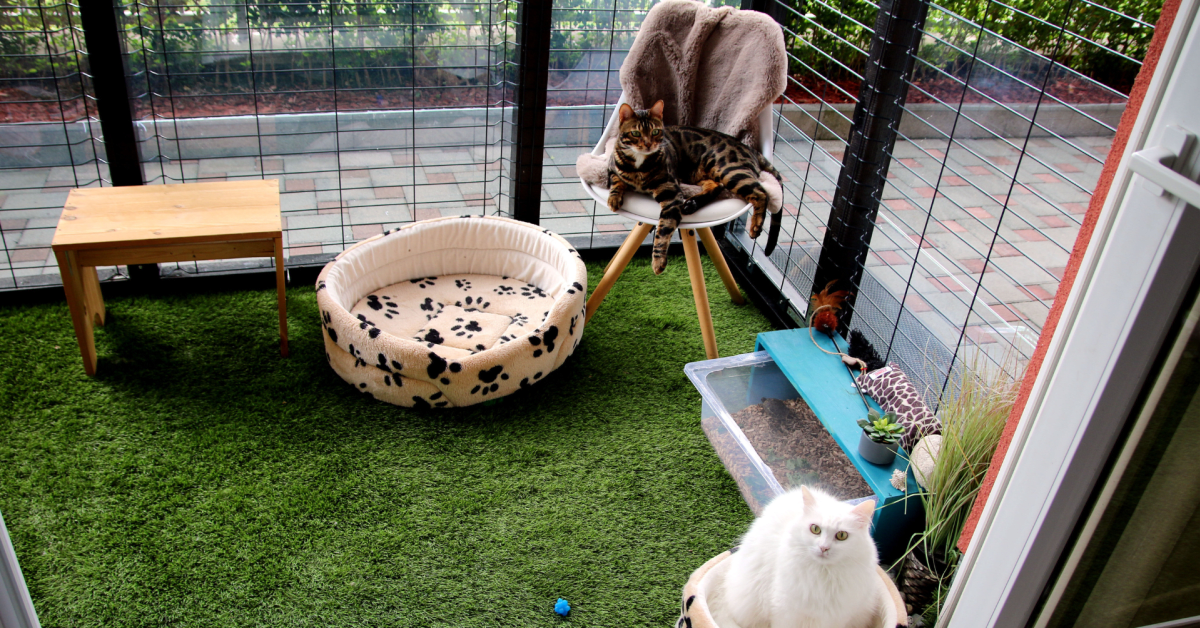
Recently, Australian pet owners have increasingly been turning to innovative solutions for ensuring safe and enriching environments for their loveable feline friends. A catio is an example; this is a mixture of the words cat and patio that is now becoming more popular in many parts of the United States.
They are specially constructed and enclosed spaces for cats, where they can experience outdoor sights, sounds, and smells without some of the risks of free roaming. The importance or significance of these enclosures for feline companionship in Australian homes will be discussed in this article.
Understanding Catios: A Safe Haven for Cats
A catio Australia designs come in all shapes and sizes, from simple window boxes to huge installations that cover entire balconies or gardens. Their major purpose is to provide a safe outdoor space for cats.
In Australia, there is a great concern about pet conservation since many urban areas have threats like traffic or predators; however, catios offer an in-between option between staying indoors safely and having exciting lives outside.
Emergence and Spread of Catios
There has been a recent rise in the number of cations across Australia as pet owners discover that their cats require exclusive outdoor spaces. This change reflects increasing awareness about responsible pet keeping and striving for a better quality life for animals.
Urban areas are particularly disadvantaged since there is limited space and safety issues that restrict outdoor exploration; however, catio offers an ideal solution. Such structures allow cats to engage in natural activities like climbing, sunbathing, or bird-watching inside a controlled environment, thus reducing the possibility of accidents or conflicts with other animals.
Benefits of Catios on the Physical and Mental Health of Cats
Catio plays a major role in enhancing both physical and mental well-being for cats. Physically, they encourage exercise as well as exploration, which helps avoid obesity and related health risks. Mentally, the stimulation provided by various outdoor sights, sounds, and smells can help tackle boredom while also keeping stress levels low.
This is especially relevant for indoor cats since, without any environmental enrichment, behavioral problems may arise due to a lack of stimulation sources, hence leading to such situations as aggression or depression, among others. By imitating outdoor experiences within safe confines, cats contribute towards creating a happier, healthier Australian feline population.
Wildlife Preservation and the Environment
In Australia, where there is a vast biological diversity but still at risk, native wildlife is significantly affected by domestic cats. Catios offer a good environmental solution by preventing cats from hunting indigenous animals in the vicinity while still letting them enjoy themselves outside.
This twofold advantage is critical for maintaining an ecological balance that safeguards fragile species of flora and fauna. Australian pet owners can take part in the conservation of wildlife by restraining their cats in appropriate outdoor spaces, thus contributing to sustainable local ecosystems.
Building a Catio for Your Home
A number of considerations need to be made when designing a catio for your Australian home so as to ensure the safety of your cat as well as its fun in it. The design should not only fit within your living space but also provide ample space for play and relaxation. Such things as perches, shelves, and climbing structures will enhance this experience for your cat, making it more active naturally too. The catio should also be highly secured against any chances of escape or possible dangers.
Establishing Community and Advocacy for Catio in Australia
With the increase in love for catio Australia, there is also growing community support from advocates who are articulating their gains. Local initiatives and organizations assist pet owners in developing safe outdoor spaces for cats by providing resources on catio design, planning, construction, and maintenance.
By telling success stories and sharing best practices, these communities create an environment where people take care of pets responsibly and become environmentally responsible. Moreover, they also advocate for cat policies that ensure cats are confined within the catio rather than allowed free access outside where possible, thereby extending their influence on a wider scale.
Conclusion
In conclusion, catios provide a novel, compassionate solution to balancing the needs of domesticated felines with the realities of city life in Australia. Catios improve cats’ physical health, mental well-being, and overall quality of life through the provision of protected outdoor settings, allaying concerns about wildlife preservation as well as public safety. The advantages accrue to other areas apart from personal homes when more Australian families pick up on the practice of using catios, leading to broader environmental and social benefits.
As such, catalyzed development has occurred through intelligent designs, responsible ownership, and the participatory community’s involvement, thus affecting the manner in which cats interact with the outdoors in Australia harmoniously.






